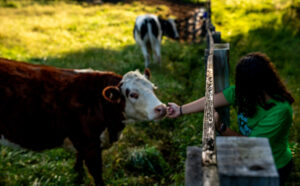It’s no secret that our economy is rapidly shifting, and as 4‑H educators we are starting to become cognizant of the fact that computer science is a “new basic skill” essential for economic opportunity and social mobility.
The White House recently launched the Computer Science For All initiative to empower all young people to learn computer science and be equipped with the computational thinking skills they need to be creators in the digital economy and leaders in a world driven by technology. Computer science also aligns with the President’s Nation of Makers initiative, which focuses on the Maker Movement—the growing democratization of the hardware and software tools needed to design and make just about anything.
Computer science and making are elements of science, technology, engineering and math (STEM). Youth acquire STEM abilities by learning computer science and making things in 4‑H.
- Skills are in great demand
- Earnings are high
- Unemployment is low
We all know that a healthy STEM workforce is critical to addressing our country’s pressing challenges and keeping our economy strong, but did you know that between 2008 and 2018, the number of STEM jobs is projected to grow by 17 percent? As 4‑H educators, we have a tremendous opportunity to prepare our youth to take advantage of this unique set of circumstances.
While not everyone can or will become a STEM professional, these abilities assist all youth to become critical thinkers, creative problem-solvers and intelligent decision makers. Intentional STEM experiences prepare youth to be the successful citizens, parents and leaders (#TrueLeaders!) of tomorrow.
Every time you—a volunteer or parent—organize a 4‑H STEM camp, workshop or club meeting, we are linking and electrifying powerful charging stations so that young people can power up to take an active role in their learning.
- Train volunteers to organize 4‑H Code or Maker Clubs or host summer camps.
- Encourage youth to enter their code and maker projects as exhibits in county fairs.
- Educate yourself by learning a programming language like Scratch or Python.
- Partner with FIRST to organize a robotics program in your county, region or state.
- Train your 4‑H club leaders to complete an Hour of Code or Design Squad Challenge and encourage them to do it with their clubs.
- Apply to be a makercamp.com affiliate.
- Join the eXtension Maker Community and learn from Extension professionals across the country who are actively engaged.
- Look for STEM funding opportunities in your state.
- Put yourself in the flow of information by signing up for the STEMconnector Newsletter.
- Participate in 4‑H National Youth Science Day during National 4‑H Week in October.
If you have more ideas, please leave them in the comments below.
















